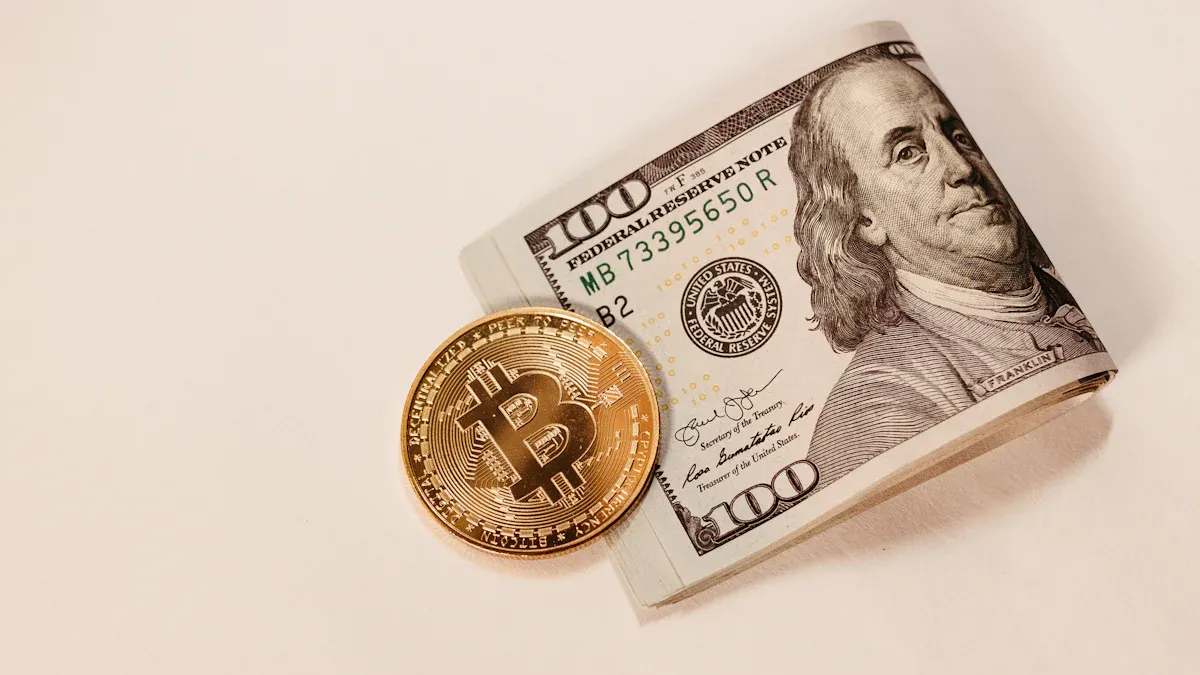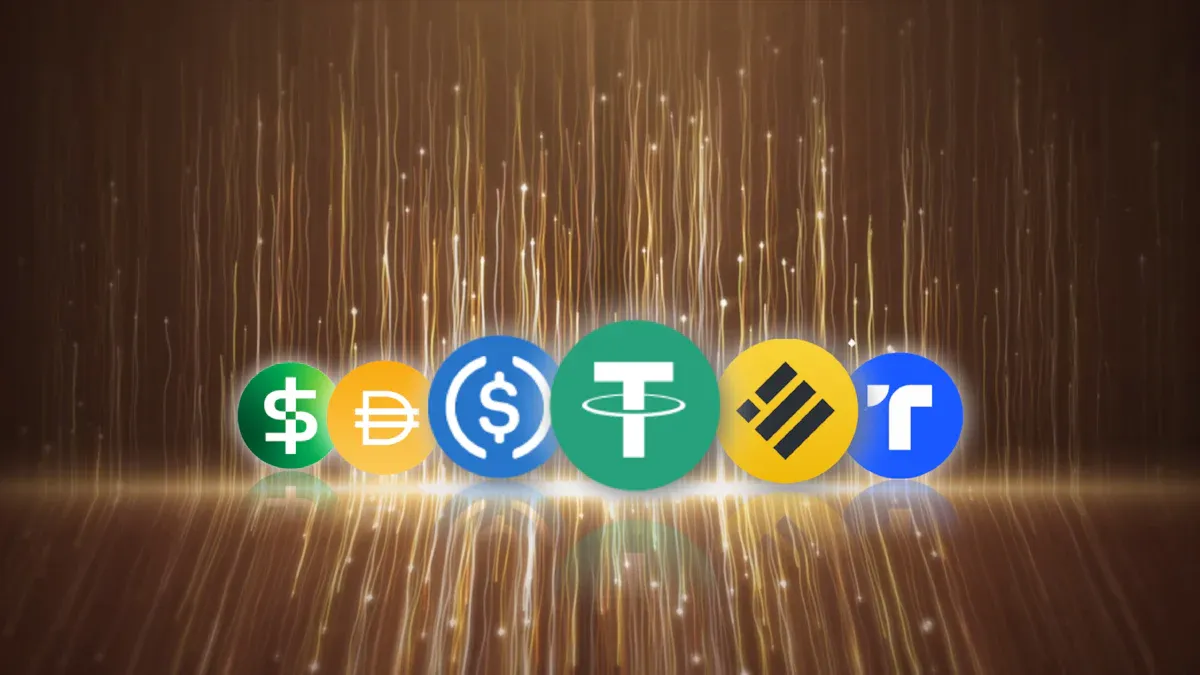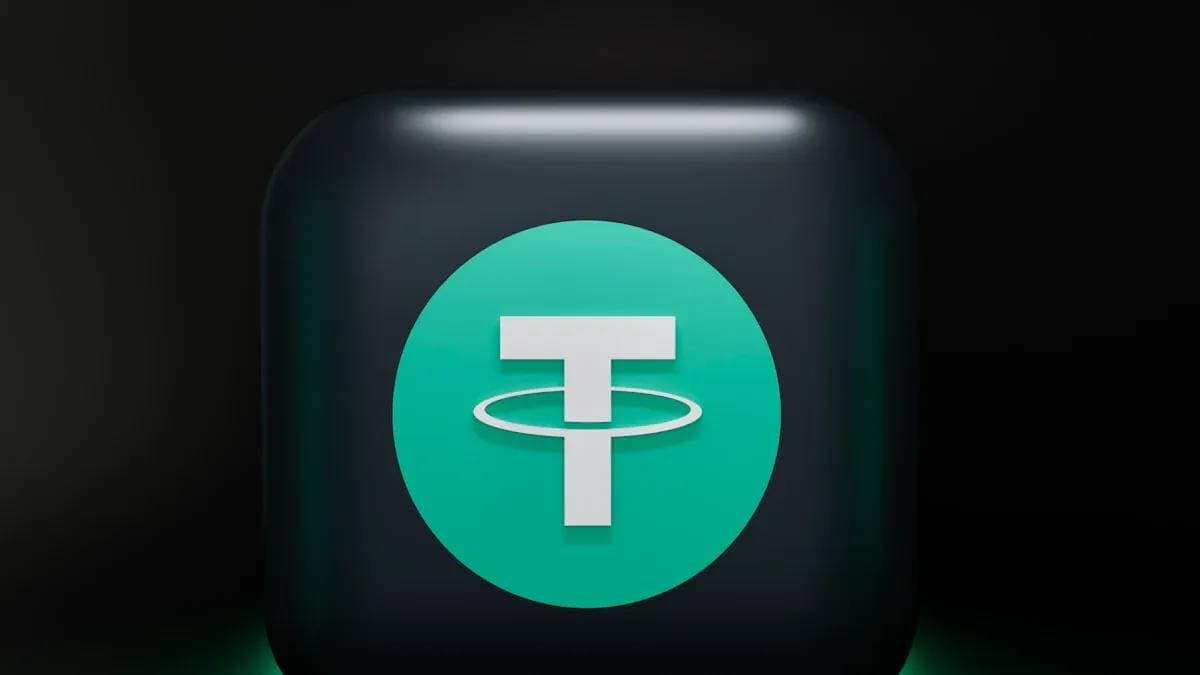- EasyCard
- Trade
- Help
- Announcement
- Academy
- SWIFT Code
- Iban Number
- Referral
- Customer Service
- Blog
- Creator
How to Send Money to Family Using USDT Stablecoin: A Complete Step-by-Step Tutorial

Image Source: pexels
Want to remit money to distant family but find traditional bank wire transfers have high handling fees and slow arrival? Actually, the process of sending money to family using stablecoin (USDT) is very straightforward.
Core Three Steps
- You buy USDT locally.
- You transfer USDT to your family.
- Your family sells USDT to exchange for local currency.
This method is usually faster than traditional wire transfers, with funds arriving within minutes, and the total cost may also be lower. Traditional bank international transfers not only charge fixed handling fees but may involve multiple intermediary banks, each deducting a portion.
| Bank | International Outbound Fee (USD) |
|---|---|
| Bank of America | $45 |
| HSBC USA | $10 - $50 (plus intermediary bank fees) |
This tutorial will guide you through every step like a nanny and help you avoid common pitfalls in operations.
Key Points
- Sending money to family using USDT is usually faster and lower-cost than traditional banks.
- Before remittance, both you and your family need to register on a cryptocurrency exchange and complete identity verification.
- When transferring USDT, be sure to choose the TRC-20 network because it has low fees and fast speed.
- In C2C trading, the recipient must first confirm receipt of money in the bank account before releasing USDT.
- Before every transfer, carefully verify the recipient address and network to avoid fund loss.
Preparatory Work Before Remittance
Before starting the remittance, both you and your family need to complete a few simple preparatory steps. This is just like both parties needing bank accounts before conducting a traditional bank transfer.
Register a Cryptocurrency Exchange
You can think of a cryptocurrency exchange as a “digital currency bank”. Both you and your family need to create accounts on the same or different mainstream exchanges (such as OKX, Binance).
The registration process is usually very simple, but for account security and full functionality, you need to complete identity verification (KYC). This generally requires you to provide:
- Basic personal information (name, residential address, etc.)
- Government-issued valid identification document (such as passport)
- A selfie for facial recognition
The entire verification process is usually quick, and once approved, you can use all features.
Obtain USDT Wallet Address
In the exchange, your USDT wallet address is equivalent to your “bank card number”. When your family receives money, they need to provide this address to you.
How to Find the Address?
- Log in to the exchange account and enter the “Assets” page.
- Click the “Deposit” or “Deposit” button.
- Select the coin
USDT.- In the Network option, select
TRC-20.- The address and QR code displayed on the page are the receiving address; copy it.
Understand C2C/P2P Trading Mode
C2C (Customer-to-Customer) or P2P (Peer-to-Peer) trading is the main way for you and your family to buy and sell USDT. Simply put, this is a platform-matched peer-to-peer trading market. You directly pay certified merchants on the platform with local currency to purchase USDT, and your family directly sells USDT to merchants to exchange for local currency. The platform provides escrow service, ensuring fund security; USDT is released to the buyer only after the recipient confirms receipt of money.
Choose the Correct Transfer Network
This is the most critical step in the entire process. When sending money to family using stablecoin (USDT), choosing different transfer networks results in huge differences in fees and speed.
| Network | Transaction Fee (USD) | Speed |
|---|---|---|
| TRC-20 (TRON) | Usually less than $1 | Very fast, arrives in seconds |
| ERC-20 (Ethereum) | Higher, may exceed $20 | Slower, depends on network congestion |
Therefore, the TRC-20 network is the preferred choice due to its low fees and high speed.
Security Warning: When transferring, the wallet addresses of both you and your family must choose exactly the same network (for example, both use TRC-20). If you send USDT from the TRC-20 network to an ERC-20 address, your funds will be permanently lost and unrecoverable.
By the way, besides USDT, USDC is also a common USD stablecoin, and the operation process is exactly the same.
Sending Money to Family Using Stablecoin (USDT): Sender Operations

Image Source: unsplash
After completing the preparatory work, now it’s your turn to operate. This process is divided into three steps: purchasing USDT, transferring USDT to your family, and performing a final security check before transfer.
Purchase USDT Through C2C
Your first step is to purchase USDT in the exchange’s C2C (also called P2P) market. This is a platform that allows you to directly buy stablecoins from certified merchants using local currency.
- Enter the C2C Market: Log in to your exchange account and find the “Buy Coins” or “C2C Trading” entrance.
- Select Payment Method: You can filter merchants based on your convenient method. Common payment methods include:
- Bank Transfer
- Credit or Debit Card
- Apple Pay & Google Pay
- SEPA Transfer
- iDEAL, Skrill, Neteller, and other e-wallets
- Choose a Reliable Merchant: This is key to ensuring transaction security.
How to Pick a Good Merchant?
- Check Completion Rate: Choose merchants with a completion rate above 98%, which means they rarely cancel orders.
- Check Trading Volume: Merchants with high trading volume are usually more experienced and process faster.
- Look for Platform-Certified Merchants: Many platforms have “Certified Merchant” or “Shield Merchant” labels. These merchants have undergone strict reviews, including identity verification and video interviews, and have deposited high security bonds. For example, some platforms’ “Strictly Selected” merchants need to deposit up to 100,000 USDT in bonds, making them more reputation-conscious since no one would joke with such a large sum.
After selecting a merchant, follow the platform prompts to pay to their provided account, then click “I have paid” and wait for the merchant to release USDT to your exchange account.
Withdraw USDT to Family Account
Once the purchased USDT arrives, you can proceed to the core transfer step. This process is called “Withdrawal” in the exchange, meaning transferring assets from your exchange account to another address.
Here are the specific operation steps:
- Enter the Withdrawal Page: In your exchange account, find the “Assets” page, then click “Withdraw”.
- Fill in Withdrawal Information:
- Select Coin: Choose
USDT. - Paste Address: Paste the USDT receiving address provided by your family here.
- Select Network: Be sure to choose the
TRC-20network. You will see the platform-displayed fee is usually less than 1 USD. - Enter Amount: Enter the USDT quantity you want to remit. Note that the platform may have a minimum withdrawal amount, such as 10 USDT.
- Select Coin: Choose
- Confirm and Complete Security Verification: Before submission, the platform will let you confirm all information again. Afterward, you need to enter Google verification code (2FA), SMS, or email verification code to authorize this transfer.
- Wait for Arrival: After submission, you can view the status in withdrawal history. TRC-20 network transfers are usually very fast, and your family’s account will receive this USDT within minutes.
Pro Tip: If this is your first operation or you are making a large transfer, it is strongly recommended to first test with a small amount (for example, 10 USDT). Complete the entire process, confirm your family can successfully receive and sell, then proceed with large-amount sending money to family using stablecoin (USDT).
Security Checklist Before Transfer
Cryptocurrency transfers are irreversible; once wrong, funds may be permanently lost. Before clicking the “Confirm” button, be sure to check the following checklist one by one and develop good security habits.
- ✅ Repeatedly Verify Address: Carefully check the pasted receiving address. At least verify the first 6 and last 6 characters to ensure they match what your family sent.
- ✅ Confirm Transfer Network: Ensure the withdrawal network you selected is
TRC-20, and the address provided by your family is also TRC-20. TRC-20 addresses usually start with a capital letter “T”. - ✅ Check Transfer Amount: Confirm the USDT quantity you entered is correct.
- ✅ Beware ofAddress Poisoning Scam: This is a common phishing scam. Scammers will find your address, then send you a zero-value transaction with a very similar-looking address (for example, differing by only one or two characters). This record will appear in your transaction history. If you habitually copy addresses from history, you may accidentally copy the scammer’s address, leading to fund loss.
Security Warning: Never directly copy addresses from your transaction history for transfer. Every transfer should reacquire from the recipient (your family) and carefully verify.
How Family Receives and Cashes Out

Image Source: pexels
After you complete the transfer, now it’s your turn to complete the final steps of receiving and cashing out. This process is equally simple and direct, but there are a few key points you need to pay special attention to ensure funds are safely secured.
Confirm USDT Arrival
Before performing any operations, the first step is to confirm USDT has arrived in your exchange account.
- Check Exchange Account: Log in to your exchange account (such as OKX or Binance) and enter the “Assets” or “Wallet” page. You should see the USDT balance increased.
- Verify via Blockchain Explorer (Optional): If you want further confirmation, you can ask your family to provide the transaction ID (also called TxID) for this transfer. You can copy this ID to the corresponding blockchain explorer (TRC-20 network corresponds to Tronscan) for query. This is like a public ledger that anyone can view the status of a transfer. Users can check USDT transaction status through blockchain explorers (such as Tronscan). For frequent small transactions, such as USDT stablecoin transfers, users usually rely on these explorers to confirm receipt.
Once you confirm USDT has safely arrived, you can start exchanging it for local currency.
Sell USDT Through C2C
The C2C (or P2P) market is where you sell USDT to other users in exchange for local currency (such as HKD, USD, etc.). The exchange platform acts as an intermediary to escrow USDT, ensuring transaction security.
Here are the detailed steps to sell USDT in the C2C market:
- Enter the C2C Trading Area: On the exchange App or website, find the “Buy Coins” function, then select “C2C Trading” or “P2P Trading”.
- Switch to “Sell” Mode: At the top of the page, switch the mode from “Buy” to “Sell”.
- Filter Orders: Select the coin you want to sell
USDTand the local currency you wish to receive. Most importantly, choose a convenient receipt method, such as bank transfer. - Choose a Reliable Buyer: Like buying coins, choosing a good buyer is crucial. Prioritize merchants with high completion rates, large trading volumes, and platform “certified” labels.
- Place Order and Wait for Payment: Click “Sell”, enter the USDT quantity you want to sell, then select your receipt account. After confirming the information is correct, submit the order. At this point, the platform will temporarily lock this portion of your USDT. All you need to do is wait for the buyer to pay to your bank account.
Fees and supported currencies vary slightly across platforms, and you can choose the most suitable platform based on the figure below.
Confirm Receipt Before Releasing USDT
This is the most critical security step for the recipient in the entire process of sending money to family using stablecoin (USDT).
Security Iron Rule: Be sure to first log in to your bank account or payment app, personally confirm the money has arrived, then return to the exchange and click the “I have received payment, confirm release” button.
Why is this step so important?
In P2P trading, if the seller releases USDT before the bank account funds arrive, there is huge risk. Some scammers exploit this process to induce third parties to transfer funds to your bank account, while you unknowingly transfer USDT to the scammer. When the real victim reports to the police, your bank account may be frozen for involvement in illegal activities. At that time, you need to prove your innocence yourself, but in fact, you have unwittingly become an accomplice to the scam.
Therefore, strictly follow the following verification checklist:
- ✅ Log in to Bank App for Verification: Do not trust any screenshots or SMS notifications. Personally log in to your bank account and confirm the balance has indeed increased.
- ✅ Verify Amount and Name: Confirm the received amount matches the order exactly. Also, note whether the payer’s name matches the buyer’s real-name information displayed on the platform.
- ✅ Ignore Any Urging: If the buyer urges you to release USDT quickly but your account has not received the money, stay calm and insist on the principle of “no release without receipt”.
Only after you confirm receipt of the full payment without error can you click “Confirm Receipt and Release” on the exchange order page to release USDT to the buyer. At this point, the entire remittance process is safely completed.
Knowledge Expansion: Stablecoin Co-Branded Cards
In some countries and regions (mainly the European Economic Area EEA), there is another way to use USDT—stablecoin co-branded cards. These cards allow you to directly use cryptocurrency (including USDT) in your exchange account for daily spending.
Card Name Supported Assets (Including Stablecoins) Available Regions Wirex Card BTC, ETH, LTC, XRP, stablecoins, etc. UK, EEA, Asia-Pacific Crypto.com Card Multiple cryptocurrencies and stablecoins Regions accepting Visa globally This provides another possibility for fund usage, but it is not yet widespread in many regions.
Comprehensive Analysis of Costs and Risks
After you master the operation process proficiently, understanding the related costs and risks is equally important. This can help you make wiser decisions and ensure fund security.
Remittance Cost Calculation and Comparison
The total cost of using USDT for remittance is usually lower than traditional banks, but it is not completely free. Your total fees consist of several parts:
- C2C Trading Spread: When you buy and sell USDT, the price will have a slight difference from the real-time USD exchange rate. This spread is the merchant’s profit and your implicit cost.
- Withdrawal Network Fee: This is the fee you pay to the blockchain network when transferring USDT from your account to your family. The fee varies by network but is usually fixed and unrelated to your transfer amount.
- TRC-20 (Tron): Lower fee, usually between 1.5 - 2.5 USD.
- ERC-20 (Ethereum): Higher fee, may exceed 1.5 USD, and fluctuates greatly.
- Platform Fees: Most mainstream exchanges’ C2C trading and internal transfers are free, but you need to watch for other hidden fees.
Cost Summary Your total cost ≈ C2C buy spread + network withdrawal fee + C2C sell spread. Even including all fees, this total cost is usually much lower than the 25-50 USD handling fee plus intermediary bank fees of traditional bank wire transfers.
Risks to Be Vigilant of in Operations
Behind the convenience come some risks you need to be vigilant about.
- C2C Trading Scams: This is the most common risk. Scammers may send forged payment screenshots to urge you to release USDT. There is also a “chargeback scam”, where the counterparty uses certain revocable payment methods; after you release USDT, they cancel the transfer.
- Stablecoin De-Pegging Risk: USDT aims to peg 1:1 with USD, but there have been brief price fluctuations in history. For example, the 2022 UST stablecoin collapse once caused panic in the entire market, leading to brief instability in other stablecoins including USDT. Although the risk is low, you need to understand its possibility.
- Wallet Security Risk: If you choose to store USDT on an exchange (custodial wallet), you need to trust the platform’s security capabilities. If the platform is hacked or goes bankrupt, your assets may be at risk. If you choose to custody private keys yourself (non-custodial wallet), protecting the private key is your full responsibility; once lost, assets are permanently unrecoverable.
Understand Local Policy and Regulatory Risks
Countries’ attitudes toward cryptocurrency vary greatly, directly affecting the compliance of sending money to family using stablecoin (USDT).
- High-Risk Regions: Taking mainland China as an example, regulators have completely banned all forms of cryptocurrency trading. Operating in these regions exposes you to high policy uncertainty and legal risks.
- Clearly Regulated Regions: In the United States, cryptocurrency is treated as property, and gains from buying and selling need to pay capital gains tax as required. You need to proactively understand and comply with local tax regulations.
- Open Attitude Regions: Some countries like India are actively exploring the potential of stablecoins in reducing remittance costs. The regulatory environment in these regions is relatively friendly, but policies are still evolving.
Before operating, be sure to spend time understanding the specific policies in the locations of you and your family to ensure your actions are legal and compliant.
Now, let’s summarize the entire process of sending money to family using stablecoin (USDT). It is very straightforward: you buy coins on the exchange -> withdraw to family -> family sells coins on the exchange.
When operating, be sure to follow the two most important security iron rules:
- Before Transfer: Repeatedly verify the receiving address and transfer network (TRC-20).
- When Selling Coins: Must first log in to the bank account to confirm money has arrived, then release USDT.
If this is your first operation, it is strongly recommended to first complete the entire process with a small amount of funds (for example, 10 USDT). Once you are familiar with all links, you can confidently proceed with large remittances.
FAQ
Is Sending Money with USDT Legal?
Legality depends on the laws in the locations of you and your family. Some regions support it, while others (such as mainland China) have strict restrictions. Before operating, you must understand and comply with local financial regulations to ensure your actions are compliant.
What If I Accidentally Send USDT to the Wrong Address?
Blockchain transfers are irreversible. Once you send funds to the wrong address, the money is almost impossible to recover. This is why repeatedly verifying the address and network before transfer is crucial.
Why Is the USDT Price in the C2C Market Not Exactly 1 USD?
C2C merchants need to profit. They earn through buy-sell spreads, so the price will be slightly higher or lower than 1 USD. The price when you buy will be slightly higher, and when you sell, slightly lower. This small spread is the merchant’s profit.
How Long Does the Entire Remittance Process Take?
The entire process is usually very fast. The buying and selling links depend on the processing speed of you and the merchant, generally within 15 minutes. The USDT transfer itself on the TRC-20 network only takes a few minutes. The total time is usually within one hour.
*This article is provided for general information purposes and does not constitute legal, tax or other professional advice from BiyaPay or its subsidiaries and its affiliates, and it is not intended as a substitute for obtaining advice from a financial advisor or any other professional.
We make no representations, warranties or warranties, express or implied, as to the accuracy, completeness or timeliness of the contents of this publication.




Contact Us
Company and Team
BiyaPay Products
Customer Services
BIYA GLOBAL LLC is a licensed entity registered with the U.S. Securities and Exchange Commission (SEC No.: 802-127417); a certified member of the Financial Industry Regulatory Authority (FINRA) (Central Registration Depository CRD No.: 325027); regulated by the Financial Industry Regulatory Authority (FINRA) and the U.S. Securities and Exchange Commission (SEC).
BIYA GLOBAL LLC is registered with the Financial Crimes Enforcement Network (FinCEN), an agency under the U.S. Department of the Treasury, as a Money Services Business (MSB), with registration number 31000218637349, and regulated by the Financial Crimes Enforcement Network (FinCEN).
BIYA GLOBAL LIMITED is a registered Financial Service Provider (FSP) in New Zealand, with registration number FSP1007221, and is also a registered member of the Financial Services Complaints Limited (FSCL), an independent dispute resolution scheme in New Zealand.



















